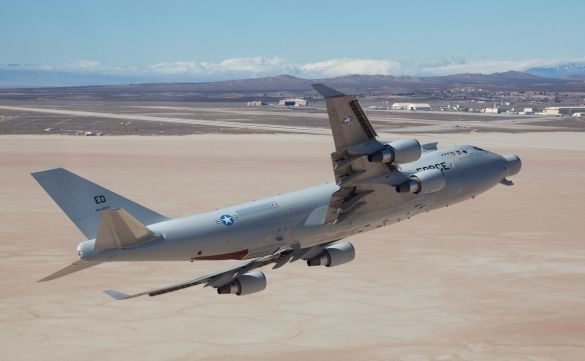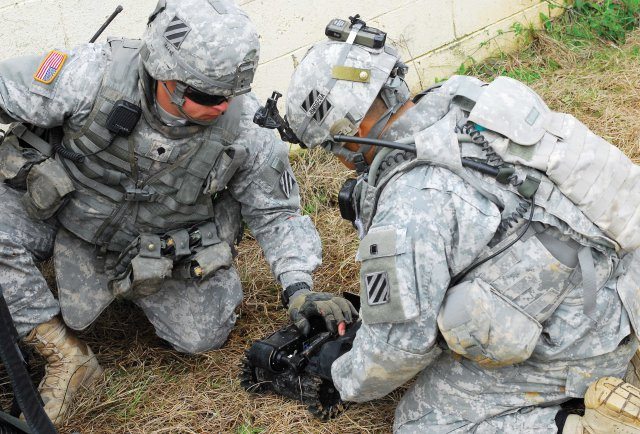The aircraft known for turning science fiction into fact, more accurately recognized as the YAL-1A Airborne Laser Test Bed, took to the skies here for the last time during its final ferry flight to Davis-Monthan Air Force Base, Ariz., Feb. 14.
The ALTB, which was a part of the Birk Flight Test Facility here for more than nine years, was a modified Boeing 747-400 Freighter that housed two solid-state lasers and a megawatt-class chemical oxygen iodine laser that could use directed energy as a viable technology against ballistic missiles.
“February 14 represents the end of a historic era in airborne directed energy research, not only for Edwards Air Force Base but for the Department of Defense at large,” said Lt. Col. Jeff Warmka, the director of the ALTB Combined Test Force. “When the aircraft departs, she won’t be coming back to Edwards Air Force Base. The test program is closing, so to us it’s a sad and reflective day … but not without optimism and great pride because we intimately know the program’s historic achievements and know what we did will benefit the nation in the future.”
Before the aircraft’s final departure, leaders from the contractor and government workforce gathered for an all-hands meeting inside the Birk Flight Test Facility to reflect and commend those involved with the accomplishments the aircraft had while it was tested at Edwards AFB since December 2002.
“This program was a unique collection of many of the best experts in the field of laser technology and flight test,” said John Wong, the ALTB CTF director of engineering. “The (ALTB) testing accomplished here was something that wouldn’t have been possible without the full combined team effort of industry, government, Air Force, MDA and (Air Force Flight Test Center) personnel.”
During its time here, one of ALTB CTF’s significant tests involved the successful engagement and destruction of a boosting solid-fueled Terrier Black Brant rocket that was launched from the ground on San Nicolas Island, Calif., Feb. 3, 2010.
“The professional ALTB team built and tested the world’s first airborne megawatt-class laser and demonstrated the ability to acquire and track a boosting missile, actively compensate the high-energy laser for atmospheric distortions, and place a stabilized laser spot on a boosting missile over hundreds of kilometers,” Warmka said. “In February 2010, we reached the ‘mountain top’ by successfully shooting down a threat-representative ballistic missile — proving the viability of directed energy for missile defense.”
Eight days after that test, the ALTB team was once again able to successfully engage and destroy a boosting liquid-fueled Foreign Military Acquisition missile. On the same flight, it successfully engaged a boosting Terrier Black Brant rocket, meeting all test objectives without negating the rocket.
“The whole program was a highlight from a (test) center’s standpoint,” Wong added. “All the things we did in this program were new and firsts for the Air Force. We’ve never flown a megawatt-class COIL on an airplane before and that’s true for both the Air Force and the Air Force Flight Test Center.”
Once the aircraft lands at Davis-Monthan AFB, the ALTB will be processed into storage at the Air Force’s Aerospace Maintenance and Regeneration Group, also known as the “Boneyard.”
“The bottom line is the Airborne Laser test program is closing,” Warmka said. “After very successfully accomplishing its key Missile Defense Agency Knowledge Points, the program transitioned into a science and technology effort in 2010. Over the past two years, MDA’s Directed Energy Program Element continued to receive reduced appropriations. In consideration of the reduced funds, MDA began program closeout and awarded a contract for storage.”
At Davis-Monthan, the ALTB and its associated systems will be screened in accordance with DOD procedures for reutilization, according to Warmka.
“Although the ‘summit’ is important, the journey up and down the mountain integrating and testing this one-of-a-kind platform will yield insights for years to come,” Warmka said.











